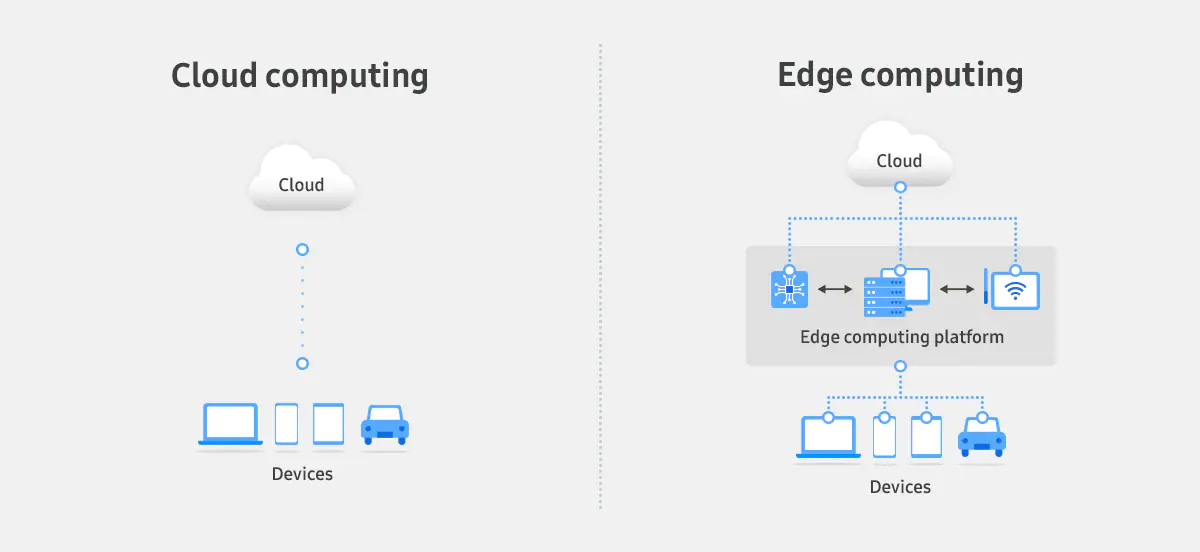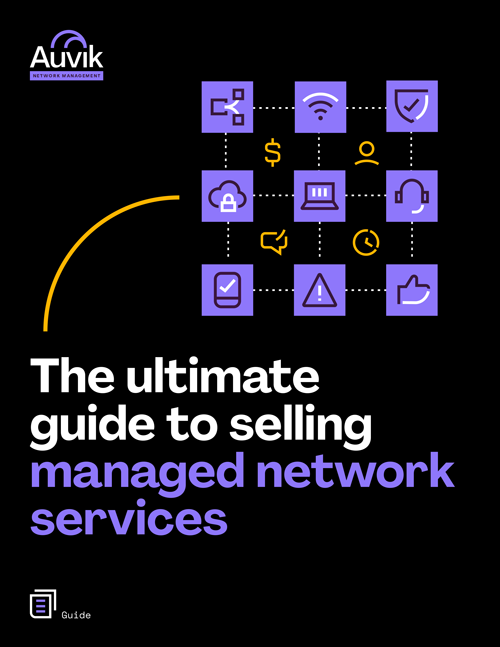Data has become an incredibly valuable commodity for most businesses. With so many people connected to the internet, the data we generate is increasing exponentially. And with it, the need to store and process it more efficiently. Edge computing is the current solution.
What is Edge Computing Technology?
Edge computing is a distributed computing architecture where data processing and storage are moved away from centralized servers to the edge of the network, closer to the end user. This allows for faster response times and improved performance.
Consider the cloud as an example. In a traditional cloud computing architecture, data is stored in centralized servers and then accessed by users over the internet. This can be slow and unreliable, especially if there is a lot of traffic or a poor connection.
With edge cloud computing, the data is instead stored and processed at the network edge – literally the “edge of the network”, as close as possible to the end user. The edge node then communicates with the centralized servers as needed, but the data processing and storage happens at the edge, making it faster and more reliable.

Quick History of Edge Computing
One of the early pioneers of edge computing was Akamai Technologies, a content delivery network (CDN) founded in the 1990s. Akamai recognized early on that the traditional centralized model of data processing was not well suited to the needs of the modern internet.
Akamai developed a distributed network of servers that could store and deliver content more efficiently than a single central server. This model proved to be very successful, laying the groundwork for developing other edge computing applications.
How Edge Computing Influences the Modern Network
Today, edge computing is driven by the growth of the Internet of Things (IoT). According to Statista, in 2020, there were 9.7 billion connected devices worldwide. And the future of IoT seems to be bright as significant growth is expected, with the total number of devices predicted to exceed 29 billion by 2030. With so many devices generating data, sending it to the cloud for processing quickly becomes impractical. Not only would it be too slow, but it would also overload the network and servers.
This is where edge computing comes in. By processing and storing data closer to the source, we can reduce the amount of data that needs to be sent to the cloud, improving performance.
Edge computing will enable the IoT to reach its full potential by providing the necessary processing power and storage capacity. Practical applications will include:
- Autonomous vehicles. Vehicles will need to be able to process large amounts of data in real-time to make decisions such as when to brake or change lanes.
- Smart homes. Systems can respond quickly to commands, such as turning on the lights or adjusting the thermostat.
- Industrial applications. Machines can communicate with each other and make decisions without human intervention.
- Improved augmented reality. AR applications will be able to process large amounts of data in real-time to provide a realistic and immersive experience.
- Smart cities. Edge computing will make cities more efficient and sustainable by managing energy usage, traffic and waste management, and transportation.
Another great example is edge networking in finance. Implementing edge technology in financial IT networks will enable:
- Development of new payment solutions. Using biometrics to authenticate transactions, for example.
- Increased payment speed. By reducing the need to send data back and forth to the cloud, transactions can be processed much faster.
- Better personalization. Edge computing can be used to provide personalized content and recommendations based on a user’s location and preferences in real-time.
- Improved security. Combining AI with machine learning and edge computing can help financial institutions detect and prevent fraud more quickly.
- More efficient integration of various apps and services. Smart home devices, wearables, and other IoT devices can be integrated seamlessly into the financial ecosystem.
- Stronger and more resilient networks. Decentralizing data and processing power will make the network more resistant to outages and attacks.
What Are the Pros and Cons of Edge Computing?
Some of the pros of edge computing include:
Reduced Latency
By processing data locally, we can reduce the time it takes to get a response. This is essential for applications that require real-time data, such as autonomous vehicles and augmented reality.
These devices will be able to process commands locally, reducing the time it takes to get a response. To that end, Amazon developed the AWS Inferentia chip in 2018, designed to run machine learning models on edge devices.
Increased Security and Privacy
By processing data locally, we can keep sensitive data from leaving the premises, which reduces the risk of data breaches. In addition, local processing can prevent data from being intercepted while in transit. iPhone’s Face ID feature uses edge computing to process data locally and keep sensitive information like biometric data on the device.
Improved Reliability
Edge computing can help improve system reliability by distributing the processing load and reducing dependencies on the cloud. For example, if an edge device goes offline, it can continue to operate independently. However, if a cloud-based system goes offline, all connected devices will be affected.
Greater Efficiency
Edge computing can help improve systems’ efficiency by reducing the amount of data that needs to be sent to the cloud. This is because data is only sent to the cloud when necessary, reducing bandwidth usage and costs.

Despite the advantages of edge computing, some challenges need to be addressed. These include:
Limited capability
Edge computing is meant to work with limited resources, meaning that many devices have reduced processing power and storage. So, the purpose and scope of the infrastructure must be well thought out to avoid unpleasant surprises.
Reliable connectivity
Edge computing requires a reliable and high-speed connection to the cloud. This can be a challenge in areas with poor or no connectivity.
Security
Edge computing devices often have sensitive data stored on them. This data needs to be protected from unauthorized access.
Data management
Edge computing devices generate a lot of data, some of which are unnecessary. This data must be managed effectively to avoid wasting storage space and bandwidth.
The Future of the Edge
Artificial intelligence (AI) has woven its way into almost every aspect of our lives, from how we interact with our devices to how we drive our cars. Currently, most AI processes run in the cloud because of the need for vast amounts of data and computational power. The problem is that an internet connection is necessary, and any bandwidth and latency issues can reduce performance.
Edge AI is a type that runs on edge devices—smartphones, sensors, and drones. By processing data locally, edge AI can provide real-time results without needing an internet connection. The advantage of edge AI is increased data security and far better response speeds. This makes it the perfect solution for any application requiring real-time results, such as autonomous vehicles and augmented reality. And by not uploading data to the cloud, privacy and security concerns are greatly reduced.
The future of edge AI is very exciting, and the possibilities are endless. We can expect to see more AI applications running on edge devices as the technology continues to evolve. And as data security and privacy concerns continue to increase, edge AI will become even more popular.
Network Monitoring and Management in the World of Edge Computing
Do we still need network monitoring and management in a world dominated by edge computing? The answer is yes.
Edge computing has brought (and will continue to bring) many changes to the world of networking, but it hasn’t made network monitoring and management obsolete. After all, what is edge computing technology without an effective network monitoring and management solution other than a headache?
What underlying concept is edge computing based on? Simply put, it’s the idea that data should be processed as close to the source as possible to minimize the load on the network and improve performance. In other words, the goal is to make the network as efficient as possible. And network monitoring and management are essential for achieving this goal.
For example, the real-time mapping and alerts provided by network monitoring can help identify and fix any bottlenecks in the network. This is essential for ensuring that data is processed quickly and efficiently, even with edge networks. After all, edge-to-cloud data processing only works if the data can flow freely between the edge devices and the cloud.
There’s also the matter of inventory (ITAM) and documentation. In a world dominated by edge computing, the number of devices in a network can quickly become unmanageable. But with proper inventory management, it’s possible to keep track of all the edge devices in a network. This is essential for maintaining control over the network and ensuring it runs smoothly.
A network monitoring and management tool like Auvik can provide all the features and functionality needed to manage an edge network effectively. With Auvik, you can monitor and manage your entire network from a single platform and automate many tedious manual tasks associated with network management. And since it’s a vendor-agnostic solution, it’s compatible with any device.
Your Guide to Selling Managed Network Services
Get templates for network assessment reports, presentations, pricing & more—designed just for MSPs.





